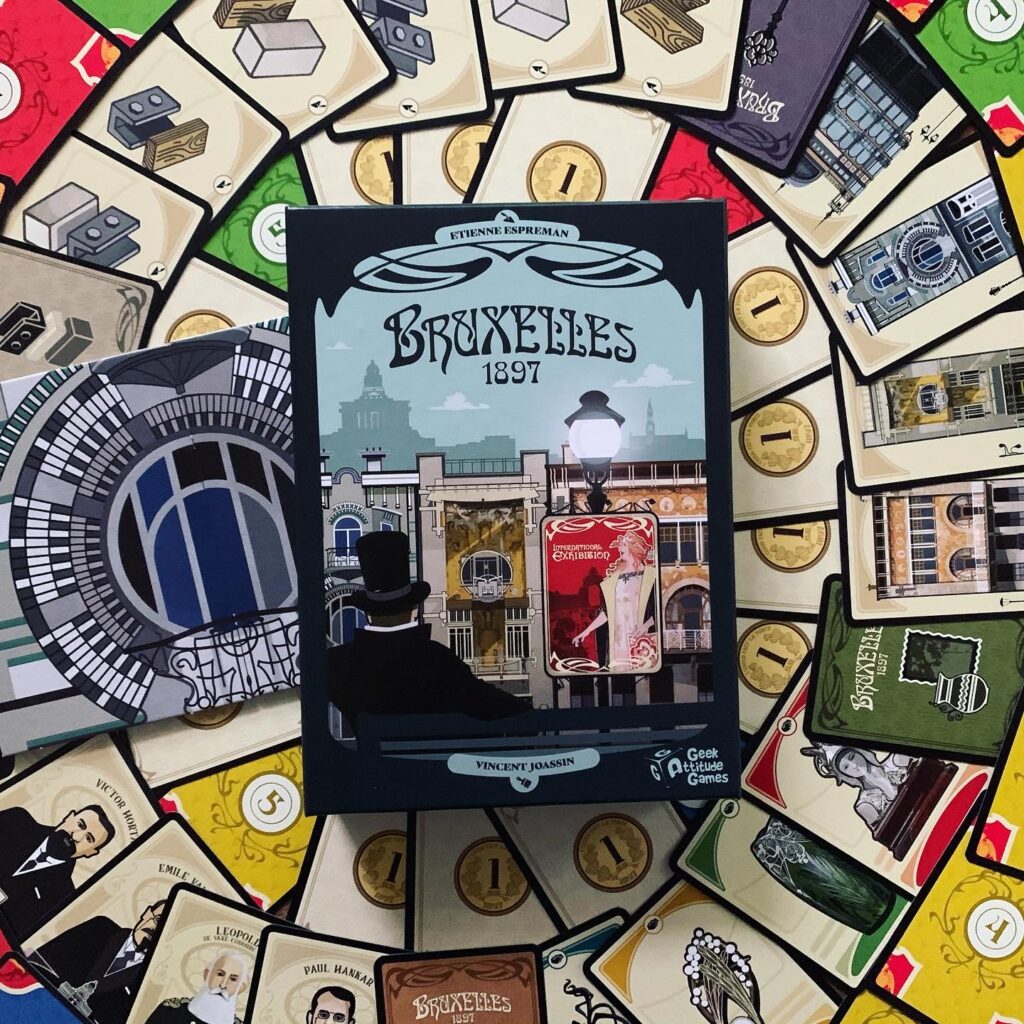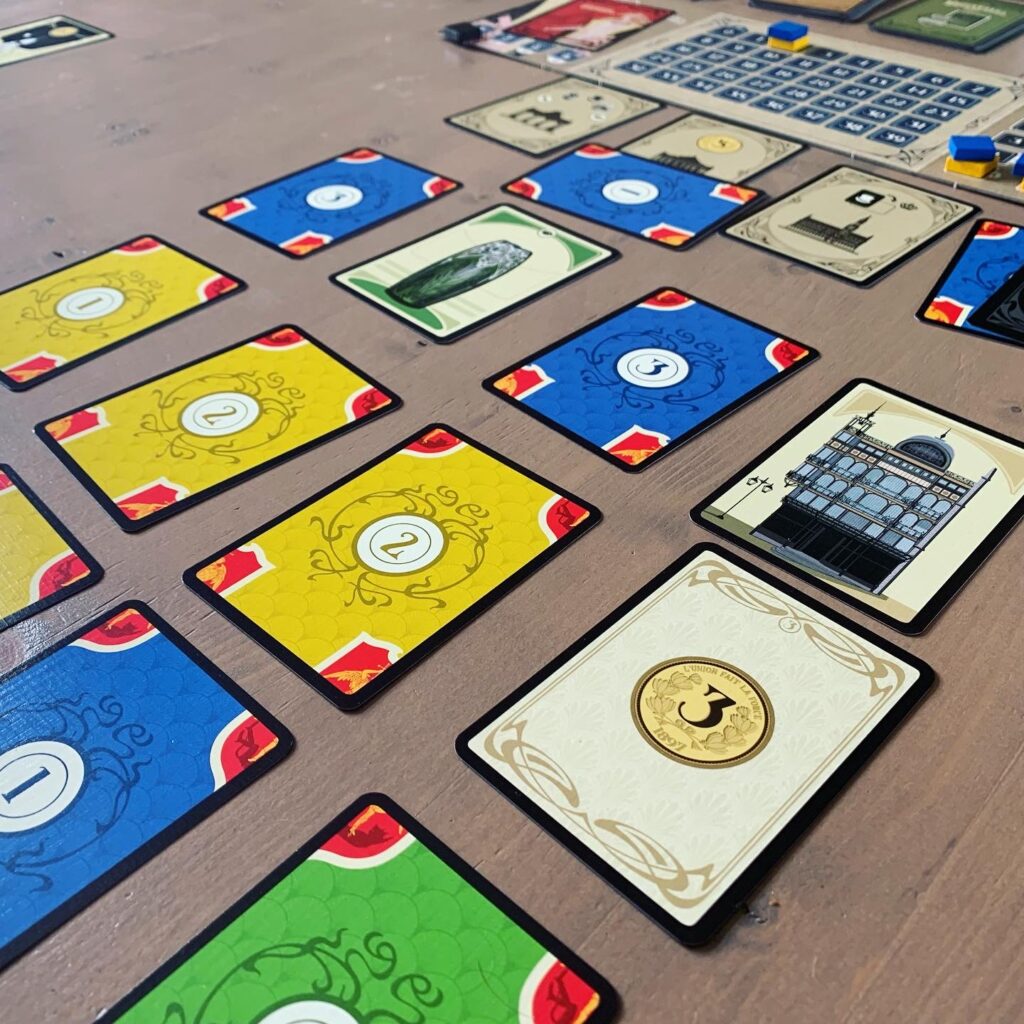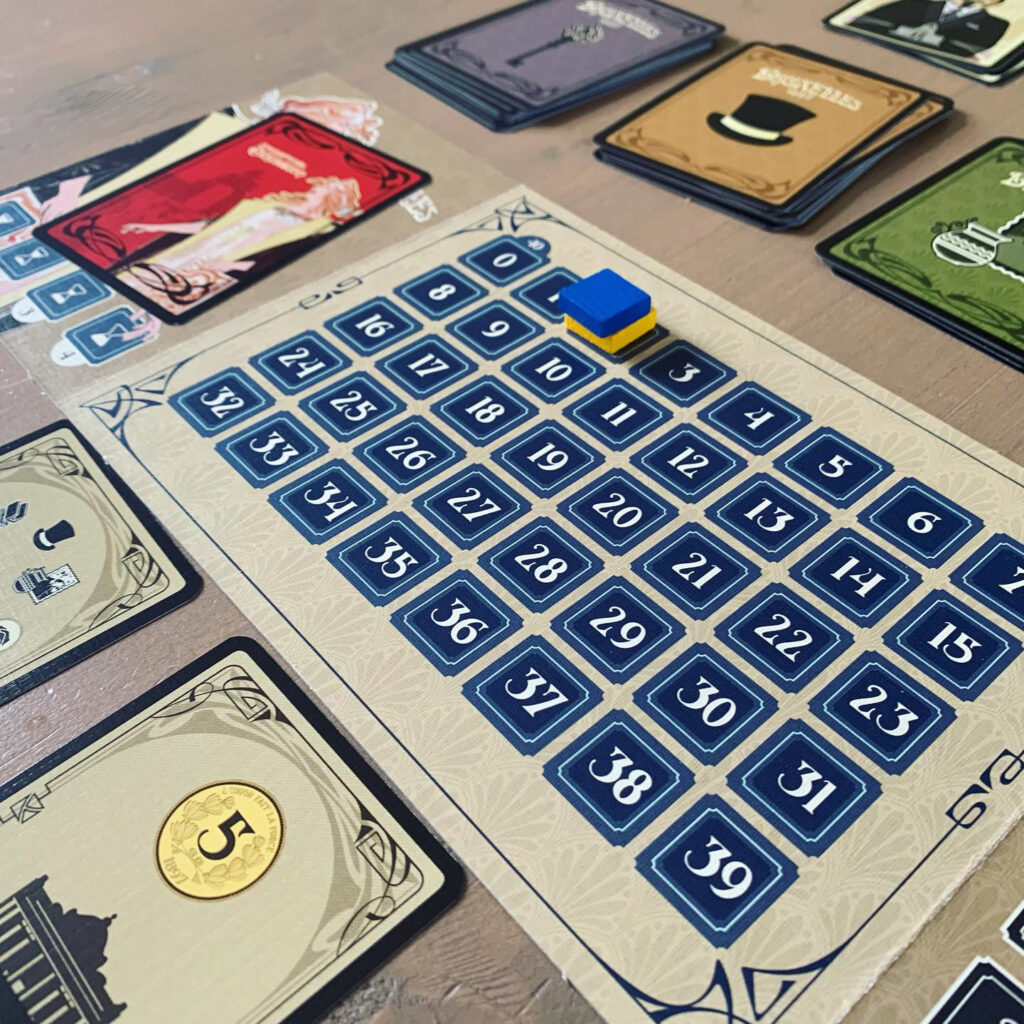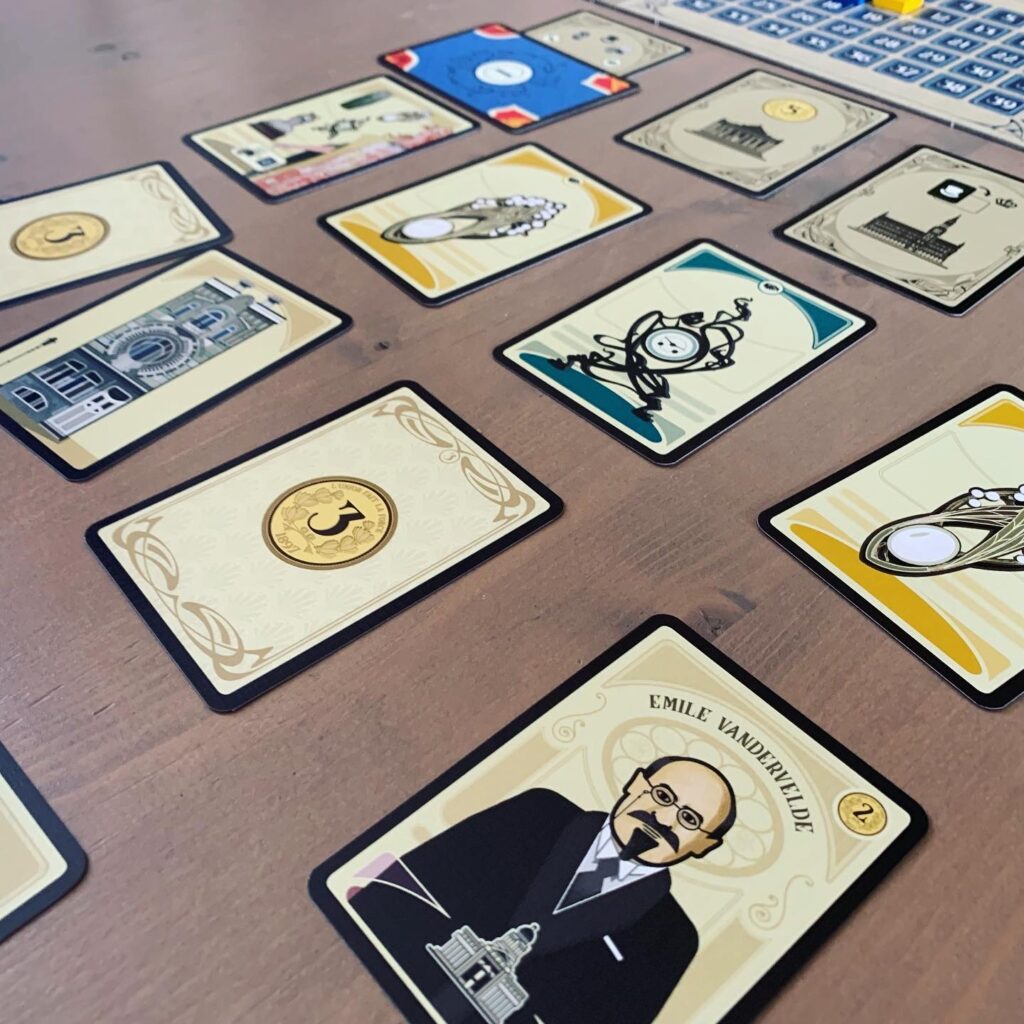NL: Het is 1897 en wij zijn in Brussel en Europa zit middenin een nieuwe kunststroming bekend als art nouveau/Jugendstil. Een kunststroming die van korte duur zal zijn (slechts de jaren tussen 1890 en 1914), maar veel impact zal hebben op Europa en met name op de stad Brussel. De art nouveau zien we terug in de kunstwerken uit deze tijd, maar met name in de architectuur van gebouwen. Veel gebouwen kregen imposante facades en versieringen aangebracht op de gevelwerken. In het spel Bruxelles 1897 ga jij met behulp van jouw architecten, bevriende edellieden uit jouw netwerk en met kunst en bouwmaterialen jouw stempel drukken op dit tijdperk. Weet jij naam te maken in Brussel of neemt Manneke Pis jou in de zeik?

Bruxelles 1897 is een worker-placement spel met kaarten in plaats van workers. Het spel wordt gespeeld in vier rondes en iedere ronde worden er kaarten in een grid geplaatst die de mogelijke acties van spelers vormen. Onder aan dit grid worden bonuskaarten geplaatst en bovenaan dit grid ligt Brussel. Met hun architecten (hun beginhand met kaarten) gaan spelers acties uitvoeren. Om een actie uit te voeren, kiest een speler een kaart uit het grid en plaatst op de vrijgekomen plek een architect (tweezijdige kaarten, waarbij iedere zijde een verschillende waarde heeft). Hierna betaalt de speler de architect (een speler kiest zelf welke zijde zij wilt spelen en dus betalen) en voert de bijbehorende actie uit. Een speler kan kunst verzamelen, kunst verkopen voor inkomsten, bouwmaterialen verzamelen, edellieden te vriend houden voor extra acties of gebouwen bouwen of een tentoonstelling beginnen om met kunst overwinningspunten te verdienen. Daarnaast kan een speler ook Brussel bezoeken voor vergelijkbare acties. Ook voor het bouwen van gebouwen verzamelen spelers punten afhankelijk van de gebruikte bouwmaterialen. Je moet uiteraard wel een imposant gebouw opleveren.

Aan het einde van een ronde wordt gekeken welke speler de meerderheid heeft per kolom in het grid. Voor de meerderheid wordt gekeken welke speler de hoogste waarde aan architecten heeft. De speler met de meerderheid krijgt de bonus onderaan de kolom. Met deze bonussen kan een speler bijvoorbeeld vooruitgaan op verschillende sporen op het overwinningspuntenbord om zo nog meer overwinningspunten te vergaren. Status is alles.

Bruxelles 1897 is een worker placement met een twist. Doordat de acties niet op een bord staat, maar op kaarten, verandert het speelveld constant, waardoor iedere potje anders is. Het mechanisme waarbij spelers moeten kiezen voor welke waarde zij een architect plaatsen is innovatief. Kies je voor een hogere waarde, waardoor de actie duurder is, maar jij de meerderheid mogelijk krijgt of ga je voor goedkoop en bekoop je dat wellicht duur? Ook de art nouveau stijl van de kaarten is uiteraard erg sfeervol. Voor de liefhebbers van complexe kaartspellen.

EN: It is 1897 and we are in Brussels and Europe is in the midst of a new art movement known as Art Nouveau/Jugendstil. An art movement that will be short-lived (only the years between 1890 and 1914), but one that will have a great impact on Europe and especially on the city of Brussels. Art Nouveau is reflected in the works of art from this period, but especially in the architecture of buildings. Many buildings were given imposing facades and decorations. In Bruxelles 1897, you will use your architects, noble friends from your network, art and building materials to make your mark on this era. Will you make a name for yourself in Brussels or will Manneke Pis take the piss out of you?
Bruxelles 1897 is a worker-placement game with cards instead of workers. The game is played in four rounds and each round cards are placed in a grid that represents the possible actions of players. Bonus cards are placed at the bottom of this grid and Brussels is at the top. With their architects (their starting hand with cards) players perform actions. To perform an action, a player chooses a card from the grid and places an architect on the vacant spot (two-sided cards, each side having a different value). After this, the player pays the architect (a player chooses which side to play and thus pay) and performs the corresponding action. A player can collect art, sell art for income, collect building materials, befriend noblemen for additional actions or build buildings or start an exhibition to earn victory points with art. Additionally, a player can visit Brussels for similar actions. Also for the construction of buildings players collect points depending on the building materials used. Of course, you have to produce an impressive building.
At the end of a round, it is determined which player has the majority per column in the grid. For the majority, it is determined which player has the highest value of architects. The player with the majority gets the bonus at the bottom of the column. With these bonuses, a player can, for example, advance on different tracks on the victory point board to collect even more victory points. Status is everything.
Bruxelles 1897 is a worker placement with a twist. Because the actions are not on a board but on cards, the playing field changes constantly, making every game different. The mechanism where players have to choose for which value they place an architect is innovative. Do you choose for a higher value, making the action more expensive, but you might get the majority or do you go for cheap and pay the price? The art nouveau style of the cards is also very attractive. A game suited for connaisseurs of complex card games.



